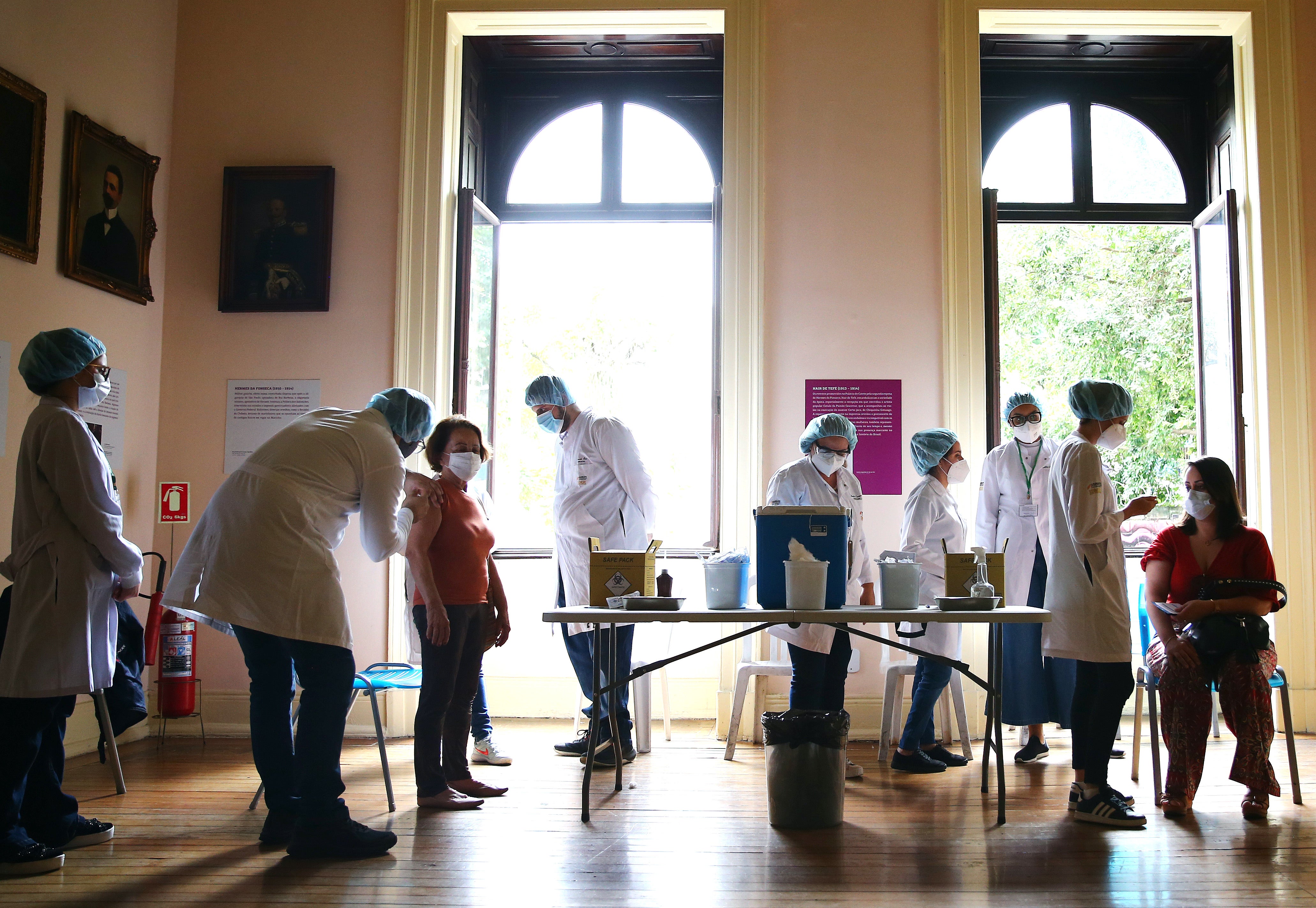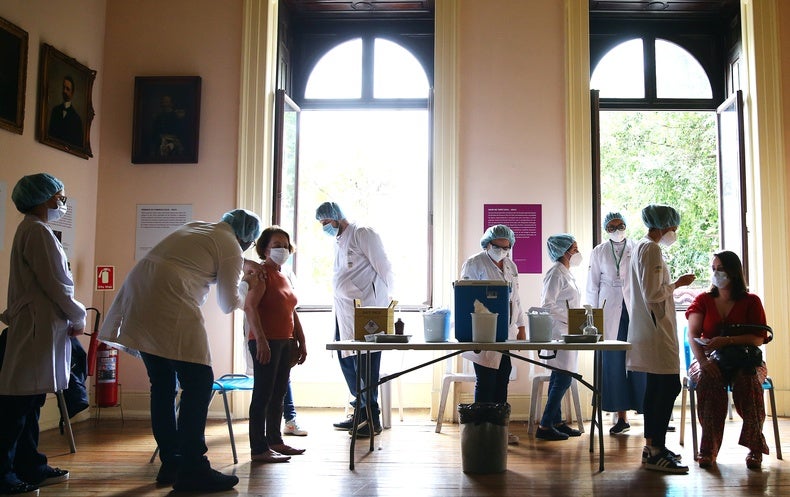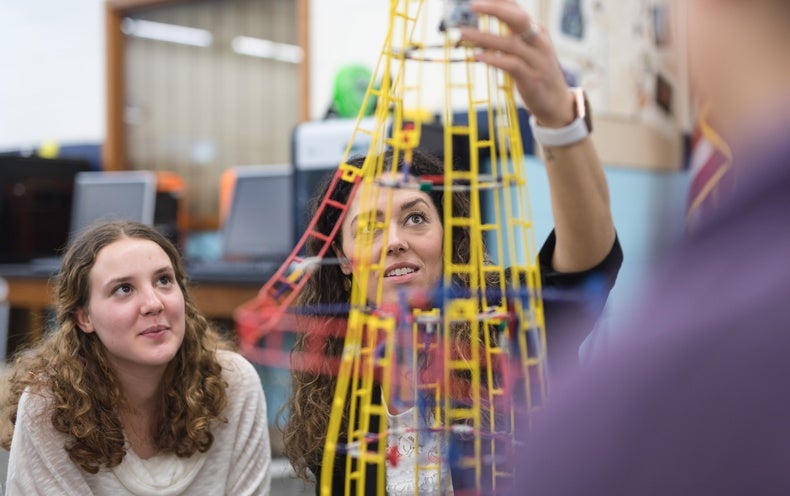
During the course of the COVID-19 pandemic, media outlets, health experts and scholars have explained the COVID-19 vaccine divide in the U.S. as partisan, educational, racial or socioeconomic. As it stands, the overall U.S. adult vaccination rate has hovered around 65 percent for months now. But this division may go back to the founding ideals of democracy in the U.S.: Americans simply aren’t accustomed to expecting much from their government.
Vaccinating everyone depends on more than the availability of vaccines; it depends on health infrastructure woven into the fabric of society. If preventing further pandemics is truly a goal of the U.S. public health system, then instead of investing in private health care and subsidizing private research for vaccine development, the U.S. should invest in the development of public health systems and develop strategies to include social rights in the principles of its democracy.
Brazil, our homeland, is a prime example of how that can be done and how vaccine acceptance can become a matter of course.
In July 2021, a group of drug traffickers approached the staff of a public vaccination site in a slum of Rio de Janeiro called Maré. A friend of ours who works in Maré shared the story: Armed with shotguns, the drug dealers demanded to be vaccinated against COVID-19, even though at that time, Rio was only vaccinating people above 50 years old (most drug traffickers are in their teens or 20s).
“We know there is this Delta variant going around, and we want to be protected,” they told the vaccination staff, who had no choice but to vaccinate everyone.
At first, the drug traffickers’ eagerness to get vaccinated might seem surprising, but the truth is, Brazilians from all walks of life welcome vaccines as a public health right. In the 2020 H1N1 pandemic, for example, Brazil vaccinated more people than any other country. Citizens are used to lining up in public health centers for routine vaccinations, despite the anti-vax attitude of its president, Jair Bolsonaro.
Although COVID-19 vaccines were slow to arrive in Brazil, as of March 2022, virtually 100 percent of the adult population in Rio and São Paulo are fully vaccinated. This is a stark difference from the U.S. In New York, one of the most vaccinated megacities, 78.2 percent of the adult population has received two doses—despite having no shortage of vaccines. Brazil has about two thirds the population of the U.S., but in November 2021, Brazil surpassed the U.S. in the share of its population that is fully vaccinated. And that gap keeps increasing.
The reason most Brazilians embrace vaccines, and about a quarter of Americans resist them, is deeply rooted in how these two democracies developed.
Since the 19th century, political analysts, such as Alexis de Tocqueville, have remarked on the decentralized democratic structure in the U.S., which has pushed the role of the state to the periphery and heavily relied on associations among civil society. During the formation of the U.S., there was a focus on civil and political rights, with an emphasis on individual liberty and freedom.
While Brazil is also a democracy and a federation, with grassroots political associations of its own, Brazilian political history has emphasized the role of the state in ensuring social rights. In short, Brazilians expect health and other services to come from the government. Even before the current 1988 constitution, which establishes public health as a human right, previous governments ensured labor rights and social welfare for everyone in the country.
The development of the Brazilian democratic process created the infrastructure for a free nationwide public health system. This, in turn, has supported people’s acceptance of top-down public health measures—even among drug traffickers. Even if this system is often precarious, and at risk of dismantlement by Bolsonaro’s government, people still expect the government to provide free health care. This is very different from the U.S., where government-funded health care is directed mainly to people living below the poverty line and to seniors.
Years ago, when one of us (Araujo) worked as a teacher in Rio’s Vidigal slum, his students used to share stories about stopping by the public health care center to greet the doctor on their way to school. This daily interaction created a relationship of trust. When someone felt ill, they did not hesitate to ask for help; help was inside their community. This trust in the public health system has now translated to public acceptance of COVID-19 vaccines.
These health care providers are part of SUS, Brazil’s public health system, created in 1988 as a human right with the intent to serve everyone in the country. The service, which includes a decentralized network of providers, including doctors, hospitals and urgent care centers, is free. Most of the favela and low-income population in Brazil depend entirely on the SUS for health care, and many middle-class citizens use SUS for routine vaccinations and emergency care.
SUS is not perfect. Public hospitals, for example, deal with funding shortages and long waiting lines for treatment. But everyone has access to basic health care. SUS providers represent a continuously present institution and are often members of the community themselves. More than an inconvenient step to getting a prescription, SUS providers are trusted liaisons, connecting community members with health researchers, government officials and grassroots interventions.
The U.S. has no such system. For many Americans, regular health care is financially out of reach. Half of Americans carry medical debt—and the government has little role in ensuring access to health care. Health care is, explicitly, a luxury, rather than a right.
It has been clear for months throughout this pandemic that vaccine acceptance is not only a scientific issue, but also a public health and communication problem. What has been less clear, however, is how the acceptance of public health measures is deeply rooted in each country’s own historical political process. We cannot change history, but we can learn from it in order to implement policy changes that improve people’s lives.
This is an opinion and analysis article, and the views expressed by the author or authors are not necessarily those of Scientific American.
























































